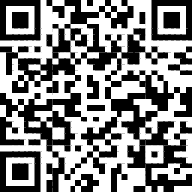Just a year ago when Katherine MacLean, Andrew Tatarsky, and I met to discuss the outline for our next workshop for the Psychedelic Education and Continuing Care Program, microdosing was a topic we would have rather avoided. “There just isn’t enough data out there, what can we say?” As professionals, we wanted to rely on published findings on the topic, a core tenant we adhere to when teaching others about psychedelics.
The databases of peer-reviewed scientific articles were empty; they still are. In the face of this gap, all we heard from our audience were questions: “What about microdosing psychedelics? Can it enhance creativity and attention? Does it reduce anxiety and depression?” This clearly wasn’t a conversation we could avoid. And, as we integrated the topic into our workshops, I began to ask myself if there was more to my avoidance about microdosing. What I’ve found is that microdosing challenges many notions of legitimate psychedelic use held by many in the psychedelic community, myself included.
James Kent introduces the search for “psychedelic legitimacy” as a consequence of the prohibition of psychedelics beginning nearly 50 years ago. As soon as psychedelics were made illegal, people began to search for reasons to legitimize their use. Consider any public figure in support of the rescheduling of psychedelics, and you’ll hear one of the following rationales. They include appeals to the religious (e.g., the Native American Church), indigenous (e.g., shamanic), historical (e.g., ancient soma rites), scientific (e.g., in psychotherapy), recreational (e.g., in nightlife), libertarian (e.g., the right to alter one’s consciousness), and others. Which one is the most legitimate? Which is the strongest argument to oppose psychedelics’ legal status? The answer will depend on whom you ask.
As you consider what microdosing psychedelics may mean for you, I’d like you to keep the notion of psychedelic legitimacy in mind. It is not only relevant to the broader topic of psychedelics’ place in society today, but it may also clarify some of your own questions about psychedelic microdosing. As you read the following points, you may wish to reflect on your own values, your assumptions, and your expectations about microdosing.
Scientific Evidence of Utility and Safety
Since there is no peer-reviewed empirical research on microdosing, there is no unequivocal scientific evidence to support microdosing as being helpful for psychiatric symptoms such as depression or anxiety, nor is there such evidence supporting general enhancements to creativity or attention. However, microdosing advocates will point to their personal experience as sufficient evidence. Or they may highlight the vast collection of self-reported microdosing experiences, collected and evaluated by Jim Fadiman. Are the experiences of individuals trying microdosing on their own sufficient? Do you consider the peer-reviewed scientific approach the ultimate level of analysis for obtaining evidence? Or do you adhere to other approaches for obtaining truth?
Like the question of utility, there is also a deficiency in the scientific literature with regard to safety. The attention to microdosing is new, so we do not have longitudinal data on the consequences of more frequent, low dose psychedelic use. I have often heard the rationale by the public that the safety profile of microdosing classic psychedelics should be the same or even safer than full doses. In other words, “since a smaller amount is taken, it must be safer.” But this may not be the case. Although no data has been collected, there is a proposed mechanism by which frequent low dose LSD use may contribute to valvular heart disease. Microdosing may also pose a risk to individuals struggling with psychiatric ailments such as bipolar disorder or schizophrenia. Again, some will point to their personal microdosing use as evidence of safety. Others will argue that the benefits they experienced from microdosing outweighed the risks. How you judge microdosing will depend on your level of comfort with uncertainty and potential risk.
Symptom Resolution or Symptom Suppression
Undeniably, many people are attracted to the promises of full-dose psychedelic-assisted psychotherapy as an alternative to current pharmacological treatments. Perhaps they do not wish to use established psychiatric approaches due to fear of side effects, or they have tried these approaches, but none have been sufficiently helpful. The possibility of significantly decreasing psychiatric symptoms after several psychedelic dosing sessions, rather than daily intake, is a powerful draw. We do not yet fully understand how full-dose psychedelic-assisted psychotherapy is helpful, but research participants will often describe getting to the “core” of an issue. Where does this leave microdosing?
Common protocols for microdosing call for taking a “subperceptual dose” every fourth day for the duration of about 6 weeks. If someone with depression or anxiety follows this protocol, is this a form of symptom management? Are the person’s symptoms suppressed so they can function better? When the protocol ends, are the benefits sustained, do symptoms return, or could they possibly worsen? When considering microdosing, should a person return to this protocol over the course of their life? Or are individuals able to integrate observations from their microdosing experiences into their lives without needing to microdose further?
The Consumer-Friendly Approach
In the context of clinical trials and psychotherapy, a full-dose psychedelic experience takes time to process. Participants are prepared for weeks, an entire day is set aside for the experience, and they are encouraged to decrease their engagements in life’s demands for the days following the experience. Although this may be perceived as a “break” from work, participants are engaged in a deep process of integration for many days afterward that can be as enlightening as it is difficult. This is a challenge to make compatible with the requirements of our current lifestyle, underscored by the need to be focused and productive at work. Microdosing proposes an alternative.
Advocates of microdosing speak of enhanced abilities to focus, be mindful, and be creative while at work. Time doesn’t have to be set aside for these experiences, but rather, psychedelic microdosing can be used in conjunction with work-related tasks. Ideally, microdosing is subtle and should not profoundly challenge one’s daily experiences, interfere with ordinary behavior, alter perception, or dramatically change one’s cognitions. If this were true, it would be remarkably compatible with the demands of our society, which ever-increasingly requires greater productive output. Does this represent an adaption of psychedelic use to a more consumer-friendly capitalist culture? Some will oppose psychedelic use in this way, others will embrace it.
The Sacred and the Profane
For some, the use of a psychedelic is inherently a sacred religious act. To use a sacrament out of this context would be transgressive. Peoples from traditional psychedelic plant-using cultures may emphasize the respect for the plant spirit or the plant itself. In academia, the term “entheogen” was created to describe the use of a psychoactive compound for spiritual or religious purposes. There is tension between this approach to psychedelic use and psychedelic microdosing. To use a sacred plant to be more productive at work could be a sign of disrespect. The use of subperceptual small doses could be even seen as frivolous. However, there are also exceptions, with reports of iboga use at micro doses amongst the indigenous Bwiti people in Gabon or ayahuasca use in the tradition of Santo Daime in Céu do Mapiá, in the Brazilian Amazon. Abiding by a sacred tradition may be central for some who have an interest in microdosing, while for others such considerations may be inconsequential.
Where do you stand?
As you’ve read the points above, you may have found yourself strongly identifying with some, while vehemently rejecting others. If you find yourself frustrated at the vast generalizations I have made above, please consider this as a thought experiment. My goal has been to present opposing views on the topic of microdosing to help you arrive at your own understanding. Also consider how each perspective may be used in the argument over psychedelic legitimacy in our society. The views I’ve presented are somewhat polarized and artificial, but they fairly represent the thoughts and experiences people have shared with me. As a scientist and clinician, I know where I stand at this moment, but as the field changes at a rapid pace, these views will need to be continually revised.
Take a minute to browse our stock:
Did you enjoy reading this article?
Please support Chacruna's work by donating to us. We are an independent organization and we offer free education and advocacy for psychedelic plant medicines. We are a team of dedicated volunteers!
Can you help Chacruna advance cultural understanding around these substances?
Become a Chacruna Member
To make a direct donation click the button below:
Wednesday, June 9th, 2021 from 12-1:30pm PST
REGISTER FOR THIS EVENT HERE
There is growing enthusiasm in Jewish communities about possible ancient use and modern applications of plant medicine in Jewish spiritual development. Psychedelic Judaism introduce new potential modes of healing...



















